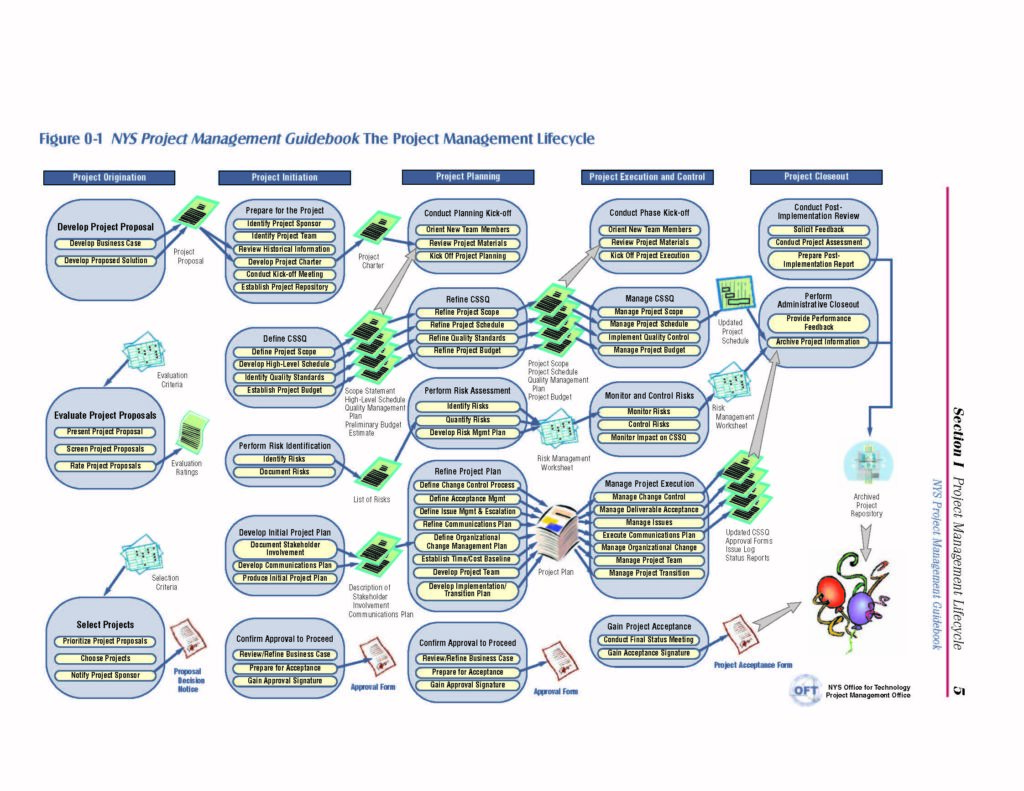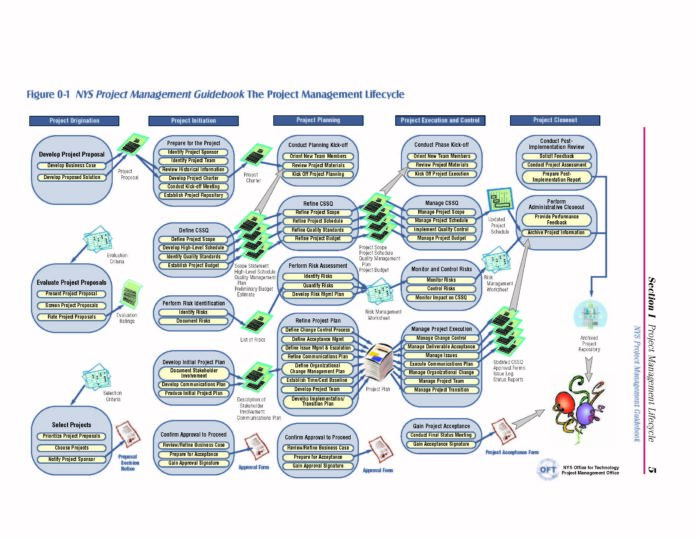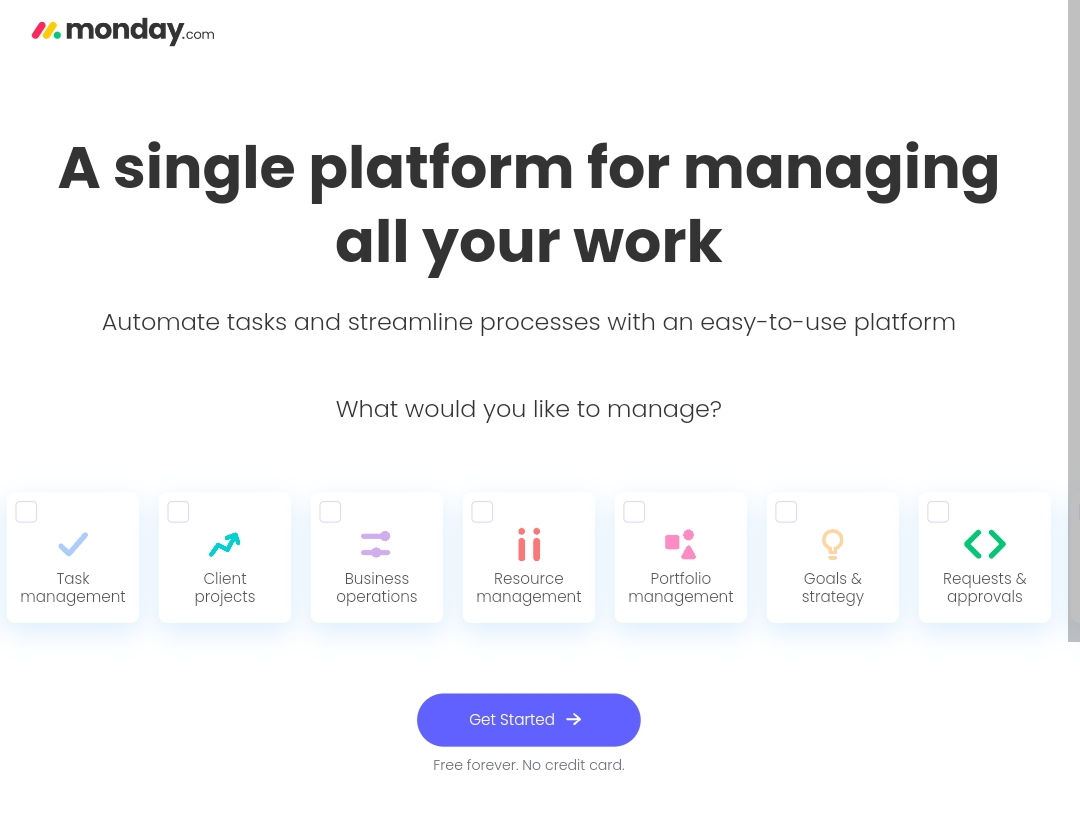There are two different lifecycles that work in conjunction with one another throughout the course of every project. The project lifecycle describes the tasks that must be completed to produce a product or service. Different project lifecycles exist for specific products and services.
For example, the lifecycle followed to build a house is very different from the lifecycle followed to develop a software package. The project management lifecycle defines how to manage a project. It will always be the same, regardless of the project lifecycle being employed.
One of a Project Manager’s challenges is to understand how to align the specific project lifecycle with the project management lifecycle. Project tasks and project management tasks are concurrent and ongoing and can be associated with project management deliverables.
The Project Schedule, for example, contains both project and project management tasks. Phases in the two lifecycles will overlap, depending upon the project lifecycle being employed. The Project Manager needs to be aware of how the inputs and outputs of one lifecycle affect and shape the other.
The material in this section is organized according to the project management lifecycle. While no two projects are exactly alike.
All projects should progress through the same five project management phases:
1-In Project Origination an individual proposes a project to create a product or develop a service that can solve a problem or address a need in the Performing Organization. The Performing Organization then submits the proposal to an evaluation and selection process. If selected, a budget or further management commitment for the project may also be required before a Project Manager is actually assigned and the project is authorized to progress to Project Initiation. Depending upon the standards and practices of the Performing Organization, a time delay between the project’s proposal and the selection and its actual initiation may occur.
2-At the beginning of Project Initiation, a Project Manager is assigned. The Project Manager works with the Project Sponsor to identify the necessary resources and team members needed to further develop the key project parameters – Cost, Scope, Schedule, and Quality (CSSQ). The Project Team documents its charge in the form of a Project Charter, which is based on the Project Proposal, which includes the initial Business Case.
Approval of the Project Charter by the Project Sponsor authorizes the designated team to begin the initial planning effort. The initial Project Plan resulting from Project Initiation differs in the level of detail and the validity of its estimates from Project Origination and must be at a level sufficient to acquire any additional resources needed to progress to the next phase.
The Project Plan also includes plans for involving and communicating with all the parties that are affected by the project, as well as identification of an initial set of foreseeable risks that can threaten the project. At the conclusion of Project Initiation, based on the initial planning documents, the Business Case is revised and re-evaluated and a decision is made to either halt the project or proceed to Project Planning.
3-Project Planning builds on the work done in Project Initiation, refining and augmenting CSSQ and Project Plan deliverables. Usually, additional members join the Project Team, and they assist the Project Manager in further elaborating the details of the Cost, Scope, Schedule, and Quality. A number of key elements are added to the Project Plan, including project-specific items such as change control, acceptance management, and issue management, as well as externally-focused items such as organizational change management and project transition.
The initial list of project risks is augmented, and detailed mitigation plans are developed. Project Planning marks the completion of the Project Plan., no work is left uncovered. However, some of the later phases of the project work may continue to be planned in more depth (Transition and Implementation details may not be developed until later in Project Execution). At the conclusion of Project Planning, the Business Case is revised and re-evaluated based on the completed planning documents and a decision is again made to either halt the project or to commit the resources necessary for Project Execution and Control.
4-Project Execution and Control is where most of the resources are applied/expended on the project. A significant number of team members will join the project at the beginning of this phase. The primary task of the Project Manager during Project Execution and Control is to enable the Project Team to execute the tasks on the defined Project Schedule and develop the product or service the project is expected to deliver.
The Project Manager uses the processes and plans prepared during Project Initiation and Project Planning to manage the project while preparing the organization for the implementation of the product/service and for transitioning the product/service responsibility from the Project Team to the Performing Organization.
5-In Project Closeout, the Project Team assesses the outcome of the project, as well as the performance of the Project Team and the Performing Organization. This is accomplished primarily through soliciting and evaluating feedback from Customers, Project Team members, Consumers, and other stakeholders.
The primary purpose of this assessment is to document best practices and lessons learned for use on future projects. Key project metrics are also captured to enable the Performing Organization to compare and evaluate performance measurements across projects.
The following diagram illustrates every phase, process, and task in the project lifecycle.







